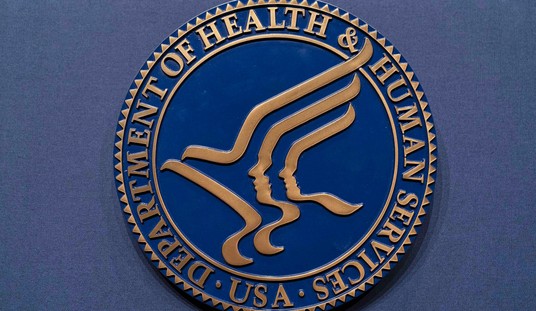New York City is still struggling to manage the fallout from the border crisis along with its homeless problem. Despite the never-ending influx of illegal aliens and asylum seekers, folks like Mayor Eric Adams and other members of New York’s leadership are not trying to apply more pressure on the Biden administration to do something about the situation at the southern border. How long can this go on before it becomes untenable?
New York City has reached a distressing milestone as the number of people in homeless shelters surpassed 100,000, largely due to an influx of illegals from the southern border. City officials reported that these individuals now constitute the majority of individuals in homeless shelters, with over 50,000 seeking refuge.
The city has allocated more than a billion dollars to house these folks and expects to spend over $4 billion by next year. Authorities are urging the state and federal governments to provide assistance in finding illegals and asylum seekers temporary homes outside the city, ensuring their basic needs are met, obtaining work permits, and facilitating their asylum claims. Concurrently, the native homeless population in the city appears to be growing, with over 81,000 individuals in the main shelter system. The situation is putting immense strain on the Big Apple:
City officials used the occasion as another opportunity to ask the state and federal governments for help: help finding migrants temporary homes outside the city; help feeding and housing the ones who are here; help getting them work permits; help finding lawyers or even interested nonlawyers to help with their asylum claims.
To make matters worse, the city is also having a hard time managing its homeless population — especially with the influx of people being transported into the region. A city comptroller audit has criticized Mayor Eric Adams’ homeless encampment sweeps, stating that they were a “complete failure” and resulted in only three individuals obtaining permanent housing.
The audit revealed that out of the 2,308 people forcibly removed between March and November 2022, only 90 stayed in shelters for more than a day. City Comptroller Brad Lander emphasized that 99.9 percent of those affected remained homeless.
Between March and November of 2022, the “forcible” removal of 2,308 homeless people resulted in only 90 of them staying in a homeless shelter for more than a day, City Comptroller Brad Lander said in the audit released Wednesday.
“The data is clear: The sweeps failed,” Lander said during a press conference in the East Village. “Here’s what for me is the most significant of the sweeps’ failure: Only three secured permanent housing. 99.9 percent of them remained homeless.”
Lander suggested adopting a “Housing First” approach instead, prioritizing permanent housing without unnecessary barriers. City officials defended the policy, arguing that people living on the streets require more support and services. The ongoing disagreement between Adams and Lander has led to further tension, with Adams mocking the comptroller and defending the sweeps as successful in clearing encampments.
What about those affected most by the constant flow of asylum seekers and illegals? Residents of the city are becoming fed up with the lack of solutions for the issue as well as the homeless problem. A recent poll indicates that New Yorkers are not willing to extend a welcoming hand to those in need.
As the city prepares a new mega-shelter for 500 families, polls show that a majority of voters oppose using State University of New York (SUNY) dorms or relocating asylum seekers to other counties within the state. With over 50,000 asylum seekers already in the city’s care, New York City Deputy Mayor Anne Williams-Isom emphasizes the need for federal assistance, stating that the city has reached a “tipping point.”
The city has allocated $2.3 million in grants to nonprofit organizations to establish navigation centers to provide essential services. However, the estimated cost of supporting asylum seekers is projected to exceed $4 billion, prompting city officials to repeatedly call on the federal government for additional help.
If the housing crisis caused by the influx of illegals and asylum seekers in the Big Apple is not resolved, the consequences could be quite severe. Firstly, the strain on the city’s resources and infrastructure would continue to escalate, leading to increased homelessness, overcrowded shelters, and limited access to essential services. The already vulnerable population of native homeless individuals would be further marginalized and face even more difficulties in finding shelter and support. The lack of adequate housing options for illegal aliens and asylum seekers could also result in a significant rise in makeshift encampments and unregulated settlements, exacerbating public health and safety concerns.
Additionally, the social fabric of the city may be strained as tensions between residents and foreigners escalate. In a worst-case scenario, it could lead to increased social unrest, conflicts, and a deterioration of community cohesion. The failure to resolve the housing crisis could also have economic repercussions, with strained public resources and increased costs for the city. The burden of providing shelter and support for illegal aliens and asylum seekers would continue to grow, putting additional pressure on local government budgets and potentially hindering other essential services and initiatives.
Here’s the thing. Even with more federal assistance and funding, this situation is not sustainable by any stretch of the imagination. If more people continue entering the country through the southern border, cities like New York City, Chicago, and others will become even more overwhelmed. This is especially true if governors in red states continue transporting these individuals to these cities because their border towns are already feeling the brunt of the problem.
This is not an issue that can be fixed by the cities. The White House needs to take action to secure the border. Congress needs to take action to craft viable immigration policy. Unfortunately, neither branch, regardless of party, seems to want to do this, which means we could be in for some tough times ahead.












